| Srl | Item |
| 1 |
ID:
180535


|
|
|
|
|
| Summary/Abstract |
Many studies have identified the rise of the drug trade in the inner-city slums of Ankara’s Altındağ district in the wake of post-urban transformation projects (UTPs). However, none of them has thus far discussed the surge of such organized criminal activity in relation to the wider urban policy regime of Turkey. This paper offers the concept of advanced marginality to understand the complex relations between neoliberal urban governmentality and its repercussions in local areas, which results in UTPs, the disintegration of communality, the emergence of slums, and the rise of illicit enterprises. The paper argues that the formation of organized drug trade in Altındağ following the development of UTPs is an outcome of the advanced marginality resulting from the changing urban governmentality and its deliberate neoliberal political preferences.
|
|
|
|
|
|
|
|
|
|
|
|
|
|
|
|
| 2 |
ID:
076813
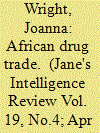

|
|
|
| 3 |
ID:
130388
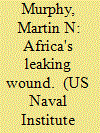

|
|
|
| 4 |
ID:
076603
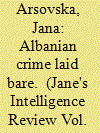

|
|
|
| 5 |
ID:
060141
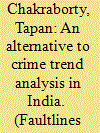

|
|
|
| 6 |
ID:
078415
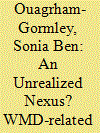

|
|
|
| 7 |
ID:
134074
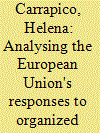

|
|
|
|
|
| Publication |
2014.
|
| Summary/Abstract |
In the past 30 years, organized crime (OC) has shifted from being an issue of little, or no concern, to being considered one of the key security threats facing the European Union (EU), the economic and political fabric of its society and its citizens. The purpose of this article is to understand how OC has come to be understood as one of the major security threats in the EU, by applying different lenses of Securitization Theory (ST). More specifically, the research question guiding this article is whether applying different ST approaches can lead us to draw differing conclusions as to whether OC has been successfully securitized in the EU. Building on the recent literature that argues that this theoretical framework has branched out into different approaches, this article wishes to contrast two alternative views of how a security problem comes into being, in order to verify whether different approaches can lead to diverging conclusions regarding the same phenomenon. The purpose of this exercise is to contribute to the further development of ST by pointing out that the choice in approach bears direct consequences on reaching a conclusion regarding the successful character of a securitization process. Starting from a reflection on ST, the article proceeds with applying a "linguistic approach" to the case study, which it then contrasts with a "sociological approach". The article proposes that although the application of a "linguistic approach" seems to indicate that OC has become securitized in the EU, it also overlooks a number of elements, which the "sociological approach" renders visible and which lead us to refute the initial conclusion.
|
|
|
|
|
|
|
|
|
|
|
|
|
|
|
|
| 8 |
ID:
075701
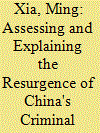

|
|
|
|
|
| Publication |
2006.
|
| Summary/Abstract |
Based upon collected crime statistics, this paper provides a sketch of China's criminal underworld during the past two decades and a quantitative assessment of its current state. Through examining the organised criminal groups, it also assesses the hardcore of China's criminal underworld — the mafia-style criminal syndicates and their greater base — the underworld society. It argues that a challenge from the criminal underworld has increasingly posed a serious threat to Chinese society. It also provides explanations for the recent resurgence of the criminal underworld in China through a perspective of political science — placing emphasis on the state-failure factors.
|
|
|
|
|
|
|
|
|
|
|
|
|
|
|
|
| 9 |
ID:
087465


|
|
|
|
|
| Publication |
2009.
|
| Summary/Abstract |
Poaching of tigers is a major threat to the survival of the species. China is responsible for much of the demand for tiger parts. Poaching occurs because it is profitable and organizations able to procure transport and sell tiger products over thousands of miles and international borders also exist. Unfortunately there is little corresponding data on these organizations. It appears as if these organizations operate to minimize the most significant transaction cost along the supply chain. Tigers are a minority element in a portfolio of wildlife products assembled by smugglers in range states. Within China smugglers specialize in the skins and bones of tigers, and are most likely to operate in small, discrete groups. This is a function of the high coordination and evasion costs of operating in China. The demand for tiger parts has strong cultural and medicinal influences.
|
|
|
|
|
|
|
|
|
|
|
|
|
|
|
|
| 10 |
ID:
132832
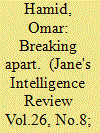

|
|
|
|
|
| Publication |
2014.
|
| Summary/Abstract |
Political and religious militants in Karachi used organized crime to fund their activities, protected by links to political parities and facing a weak security response. Omar Hamid examines the drivers behind the city's increasing fragmentation.
|
|
|
|
|
|
|
|
|
|
|
|
|
|
|
|
| 11 |
ID:
129210
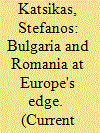

|
|
|
|
|
| Publication |
2014.
|
| Summary/Abstract |
Bulgaria and Romania joined the European Union as full member states on January 1, 2007. This momentous event was the culmination of a long and demanding political project that has often been described as "Europeanization." Although the foundations of this project were laid fairly soon after the fall of both countries' communist regimes in 1989, the pace was slow, and did not really gain momentum
until the end of the 1990s. Over the years the project ebbed and flowed, but what kept both nations committed was their strong belief that joining the EU would fill the political, economic, and security vacuum that the dissolution of the communist bloc had produced. EU membership was popularly seen as a panacea that would allow Bulgaria and Romania to stabilize their newborn democratic systems and overcome the economic problems of the postcommunist transition. It offered confirmation that the Bulgarians and Romanians were really Europeans. Seven years later, however, rather than feeling pulled into the heart of Europe, Bulgaria and Romania find themselves at the edge. Their EU partners raise questions about their commitment to the rule of law and their willingness to crack down on organized crime and illegal immigration. Does this mean that membership has not been an easy route to democratic stability, economic growth, and greater opportunity for all? European integration may be a difficult topic at a time when economic crisis has, for some, cast the entire effort into doubt. But the situation of Romania and Bulgaria lends itself to reflection on the wider project and its overall historical importance.
|
|
|
|
|
|
|
|
|
|
|
|
|
|
|
|
| 12 |
ID:
052552
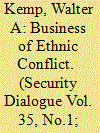

|
|
|
| 13 |
ID:
061503
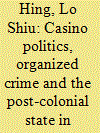

|
|
|
| 14 |
ID:
056539
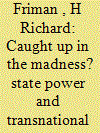

|
|
|
| 15 |
ID:
108349
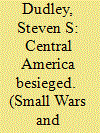

|
|
|
|
|
| Publication |
2011.
|
| Summary/Abstract |
The following is a threat assessment of the seven countries that make up Central America. That region is struggling to control burgeoning street gangs and organized criminal groups which have overrun its poor and ill-prepared security forces. The results are clear: rising crime and homicide rates throughout the region; corruption and instability within the governments. The two gangs that challenge authority are transnational in nature but pose less a threat to national security than they do to everyday life. Their drug peddling and extortion have shattered entire communities and forced the governments to reallocate important resources. The governments' strategy of jailing suspected gang members en masse has arguably made them stronger rather than weaker. Meanwhile, the organized criminal groups have deeply penetrated governments at nearly every level. They control swaths of territory, co-opting these areas, as well as the local governments, for their own purposes. Opposition to them is often futile. Mexican-based organizations are increasingly using violent tactics to displace their rivals. The governments of the region seem unprepared to meet the challenge.
|
|
|
|
|
|
|
|
|
|
|
|
|
|
|
|
| 16 |
ID:
192181
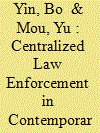

|
|
|
|
|
| Summary/Abstract |
In 2018, China's general secretary, Xi Jinping, announced a three-year war on “black societies and evil forces” and promised to take down various forms of organized crime and evil forces within society. This article examines the operational features of this particular crackdown and how they diverged from previous “strike hard” campaigns. This campaign adopted novel strategies including embedding instructions on law enforcement within criminal justice institutions, promulgating special rules on the crimes of evil forces in order to “strike” campaign targets early, and deploying intrusive investigation tactics that focused on the person and not the crime. Using democratic centralism as a liberal lens, this campaign showcases the struggle between the imperative of legality and the politics of a major campaign in China.
|
|
|
|
|
|
|
|
|
|
|
|
|
|
|
|
| 17 |
ID:
117716
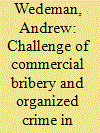

|
|
|
|
|
| Publication |
2013.
|
| Summary/Abstract |
Corruption has been classically defined as the misuse of public authority for private gain, which implies that corruption necessarily involves official authority and hence public officials. Bribery, however, often involves transactions between officials and private interests, including business interests, whereby the private party seeks to bend public authority to their advantage by paying off their official interlocker. Even in its classic form, therefore, corruption often spans both the public and the private. Public officials are not, however, alone in exercising authority. Managers and corporate officers also wield authority or fiduciary responsibility on behalf of others and can abuse that authority for private gain, not only in transactions involving public officials, but also in transactions with private parties. This article examines how China's anti-corruption institutions have dealt with 'commercial corruption', including both public-to-private corruption and private-to-private corruption. It also examines the linkages between organized crime and corruption in China.
|
|
|
|
|
|
|
|
|
|
|
|
|
|
|
|
| 18 |
ID:
132229
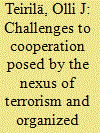

|
|
|
|
|
| Publication |
2014.
|
| Summary/Abstract |
The recent conflict in the Sahel area is another case where the nexus of terrorism and organized crime causes challenges to the international community. Comparing the situation with that of the Andean region brings forth the challenges faced when dealing with this type of conflict: the states' weak presence in the remote regions, the insurgents' ability to offer income and "security" to the people, immediate threat to international investments, unresolved political/regional issues, the marriage of convenience of insurgents/terrorists and organized crime, internal divisions of the insurgent groups and also ideologies surviving or suffering after the elimination of their leaders
|
|
|
|
|
|
|
|
|
|
|
|
|
|
|
|
| 19 |
ID:
153613
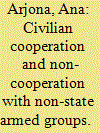

|
|
|
|
|
| Summary/Abstract |
Terms like ‘support’ and ‘collaboration’ are often used interchangeably to denote a loose set of acts or attitudes that benefit non-state armed groups (NSAGs). However, these terms are seldom defined, and the alternatives available to civilians are rarely identified. Moreover, existing approaches overlook that the interaction between civilians and NSAGs is often one between ruler and ruled, which makes obedience and resistance central. This paper proposes to conceptualize the choices available to civilians as forms of cooperation and non-cooperation, offers a typology, and discusses the implications for theory building on civilian and NSAG behavior, and on the functioning of armed social orders.
|
|
|
|
|
|
|
|
|
|
|
|
|
|
|
|
| 20 |
ID:
022449
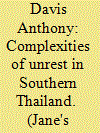

|
|
|
|
|
| Publication |
Sept 2002.
|
| Description |
16-19
|
|
|
|
|
|
|
|
|
|
|
|
|
|
|
|